Flexural Behavior of Prefabricated RC Bridge Deck with Different Joint Materials
Abstract
1. Introduction
2. Experimental Program
2.1. Test Specimens
2.2. Materials
2.3. Test Setup, Instrumentation, and Loading Protocol
3. Test Results
3.1. Failure Modes
3.2. Discussions on the Test Results
3.2.1. Load–Deflection Curves
3.2.2. Strain Distributions
3.2.3. Analysis of Load–Crack Width Curve
4. Finite Element Analysis
4.1. Model Setup
4.2. Model Verification
4.3. Force-Transferring Mechanism
5. The Proposed Calculation Procedure
5.1. Assumptions
5.2. Calculation of Cracking Moment
5.3. Calculation of Flexural Strength
6. Conclusions
Author Contributions
Funding
Data Availability Statement
Conflicts of Interest
References
- Azizinamini, A. Accelerated bridge construction. J. Bridge Eng. 2020, 25, 02020002. [Google Scholar] [CrossRef]
- Shao, X.; Hu, W. Experiment on flexural behavior of UHPC joint in negative moment area of composite bridges. China J. Highw. Trans. 2021, 34, 246–260. [Google Scholar]
- Graybeal, B.A. Material Property Characterization of Ultra-High Performance Concrete; No. FHWA-HRT, 06-103; Federal Highway Administration: Washington, DC, USA, 2006. [Google Scholar]
- Graybeal, B.A. Ultra-High Performance Concrete; Rep, No. FH-WA-HRT, 11-038; Federal Highway Administration: Washington, DC, USA, 2011. [Google Scholar]
- Zhao, Q.; Yang, M.; Li, C.; Yang, J. Experimental study on flexural performance of reinforced UHPC slab. Ningxia Daxue Xuebao 2019, 40, 331–336. [Google Scholar]
- Tayeh, B.A.; Abu Bakar, B.H.; Megat Johari, M.A.; Voo, Y.L. Mechanical and permeability properties of the interface between normal concrete substrate and ultra high performance fiber concrete overlay. Constr. Build. Mater. 2012, 36, 538–548. [Google Scholar] [CrossRef]
- Tayeh, B.A.; Abu, B.; Megat, J.; Voo, Y. Evaluation of bond strength between normal concrete substrateand ultra-high performance fiber concrete as a repair material. Procedia Eng. 2013, 54, 554–563. [Google Scholar] [CrossRef]
- Buitelaar, P. Heavy reinforced ultra high performance concrete. In International Symposium on Ultra High-Performance Concrete, 1st ed.; Kassel University: Kassel, Germany, 2014. [Google Scholar]
- Lampropoulos, A.P.; Paschalis, S.A.; Tsioulou, O.T. Strengthening of reinforced concrete beams using ultra high performance fibre reinforced concrete. Eng. Struct. 2016, 106, 370–384. [Google Scholar] [CrossRef]
- Shah, Y.I.; Hu, Z.; Yin, B.; Li, X. Flexural performance analysis of UHPC wet joint of prefabricated bridge deck. Arab. J. Sci. Eng. 2021, 46, 11253–11266. [Google Scholar] [CrossRef]
- Perry, V.; Weiss, G. Innovative Field Cast UHPC Joints for Precast Bridge Decks. Design, Prototype Testing and Projects; Chapter 28; John Wiley & Sons, Inc.: Hoboken, NJ, USA, 2011. [Google Scholar]
- Varga, I.; Haber, Z.; Graybeal, B.A. Bond of Fieldcast Grouts to Precast Concrete Elements; Federal Highway Administration, America: Washington, DC, USA, 2017. [Google Scholar]
- Young, J.K.; Won, J.C.; Se, J.J. Interface shear strength at joints of Ultra-High performance concrete structures. Int. J. Concr. Struct. Mater. 2018, 12, 767–780. [Google Scholar]
- Graybeal, B.A. Behavior of Field-Cast Ultra-High Performance Concrete Bridge Deck Connections under Cyclic and Static Structural Loading; FHWA-HRT-11-023; Office of Infrastructure Research & Development, Federal Highway Administration: Washington, DC, USA, 2011. [Google Scholar]
- Graybeal, B.A. Ultra-high-performance concrete connections for precast concrete bridge decks (Review). PCI J. 2014, 59, 48–62. [Google Scholar] [CrossRef]
- Deng, E.; Zhe, Z.; Chen, X.; Yi, T.; Wei, W.; Zhan, J.; Ji, P. Experimental study on flexural behavior of UHPC wet joint in prefabricated multi-girder bridge. Eng. Struct. 2023, 275, 115314. [Google Scholar] [CrossRef]
- Zhang, Y. Test study of mechanical behavior of UHPC-U shape reinforcement wet joint of precast deck slabs. Bridge Constr. 2018, 48, 48–52. [Google Scholar]
- Wang, K.; Guo, L.; Wang, J.; Hu, S.; Yu, G. Flexural behaviour analysis of wet joint of precast bridge deck with UHPC functional gradient. Adv. Struct. Eng. 2022, 26, 448–458. [Google Scholar] [CrossRef]
- Chen, D.; Zeng, M.; Su, Q.; Lou, Y. Interfacial treatment measures of wet joints in composite bridge deck composed of steel and UHPC layer. China J. Highw. Transp. 2018, 31, 154–162. [Google Scholar]
- Cao, X.; Feng, D.; Wu, G.; Wang, Z. Experimental and theoretical investigations of the existing reinforced concrete frames retrofitted with the novel external SC-PBSPC BRBF sub-structures. Eng. Struct. 2022, 256, 113982. [Google Scholar] [CrossRef]
- Sinsamutpadung, N.; Sasaki, E. Strain-based evaluation of bridge monitoring using numerical model analysis. Mater. Sci. Eng. 2019, 639, 012023. [Google Scholar] [CrossRef]
- Marsh, P.S.; Frangopol, M.F.D. Reinforced concrete bridge deck reliability model incorporating temporal and spatial variations of probabilistic corrosion rate sensor data. Reliab. Eng. Syst. Saf. 2008, 93, 394–409. [Google Scholar] [CrossRef]
- Erdogmus, E.; Garcia, E.; Amiri, A.S.; Schuller, M. A novel structural health monitoring method for reinforced concrete bridge decks using ultrasonic guided waves. Infrastructures 2020, 5, 49. [Google Scholar] [CrossRef]
- Du, Y. Mechanical Behavior for UHPC Ribbed Deck and Internal Shear Connection of Composite Beams with Steel Plates. Master’s Thesis, Fuzhou University, Fuzhou, China, 2019. [Google Scholar]
- Cao, X.; Xiong, C.; Feng, D.; Wu, G. Dynamic and probabilistic seismic performance assessment of precast prestressed reinforced concrete frames incorporating slab influence through three-dimensional spatial model. Bull. Earthq. Eng. 2022, 20, 6705–6739. [Google Scholar] [CrossRef]
- Jang, H.O.; Lee, H.S.; Cho, K. Numerical and experimental analysis of the shear behavior of ultra high-performance concrete construction joints. Adv. Mater. Sci. Eng. 2018, 2018, 6429767. [Google Scholar] [CrossRef]
- Hussein, H.H.; Walsh, K.K.; Sargand, S.M. Modeling the shear connection in adjacent box-beam bridges with ultrahigh-performance concrete joints. J. Bridge Eng. 2017, 22, 04017043. [Google Scholar] [CrossRef]
- Deng, O. Study on the interfacial properties of UHPC-NC composite component. J. Chongqing Univ. 2021, 44, 63–74. [Google Scholar]
- Shao, X.; Li, Y.; Liao, Z.; Cao, J. Test and finite element analysis on bending performance of UHPC Waffle deck panel. Chang’an Daxue Xuebao 2018, 38, 52–63. [Google Scholar]
- Zhu, J.; Xin, G.; Xu, C.; Zhang, H.; Wang, Y. Analysis of Flexural Behavior of Steel-UHPC Composite Girders Based on Plastic Damage Model. Steel Constr. 2022, 35, 24–32. [Google Scholar]
- Aaleti, S.R.; Petersen, B.; Sritharan, S. Design Guide for Precast UHPC Waffle Deck Panel System, Including Connections; Washington: Federal Highway Administration and U.S. Department of Transportation: Washington, DC, USA, 2013. [Google Scholar]
- GB/T 50010-2010; Code for Design of Concrete Structures. China National Standardization Administration. China Standards Press: Beijing, China, 2010.
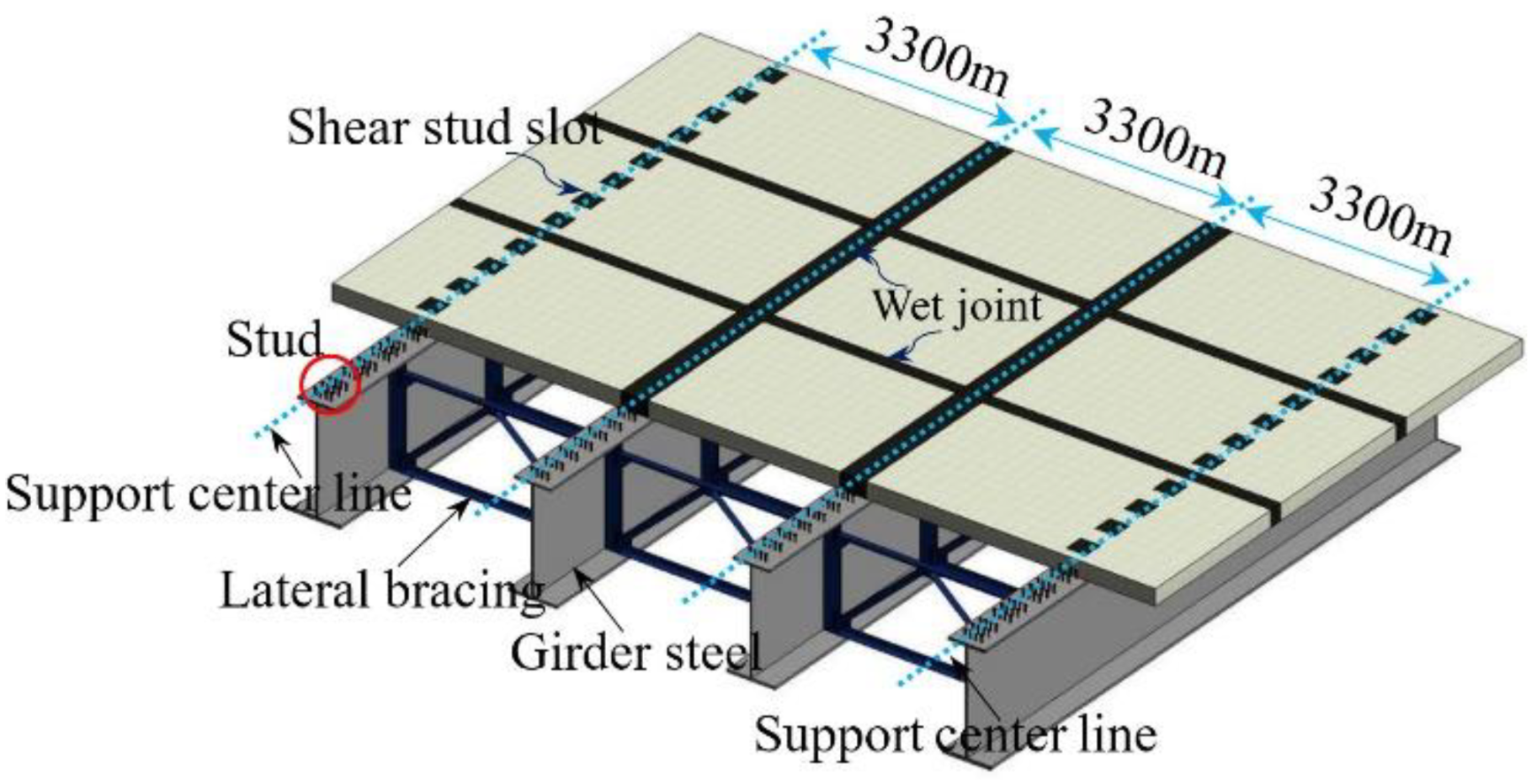

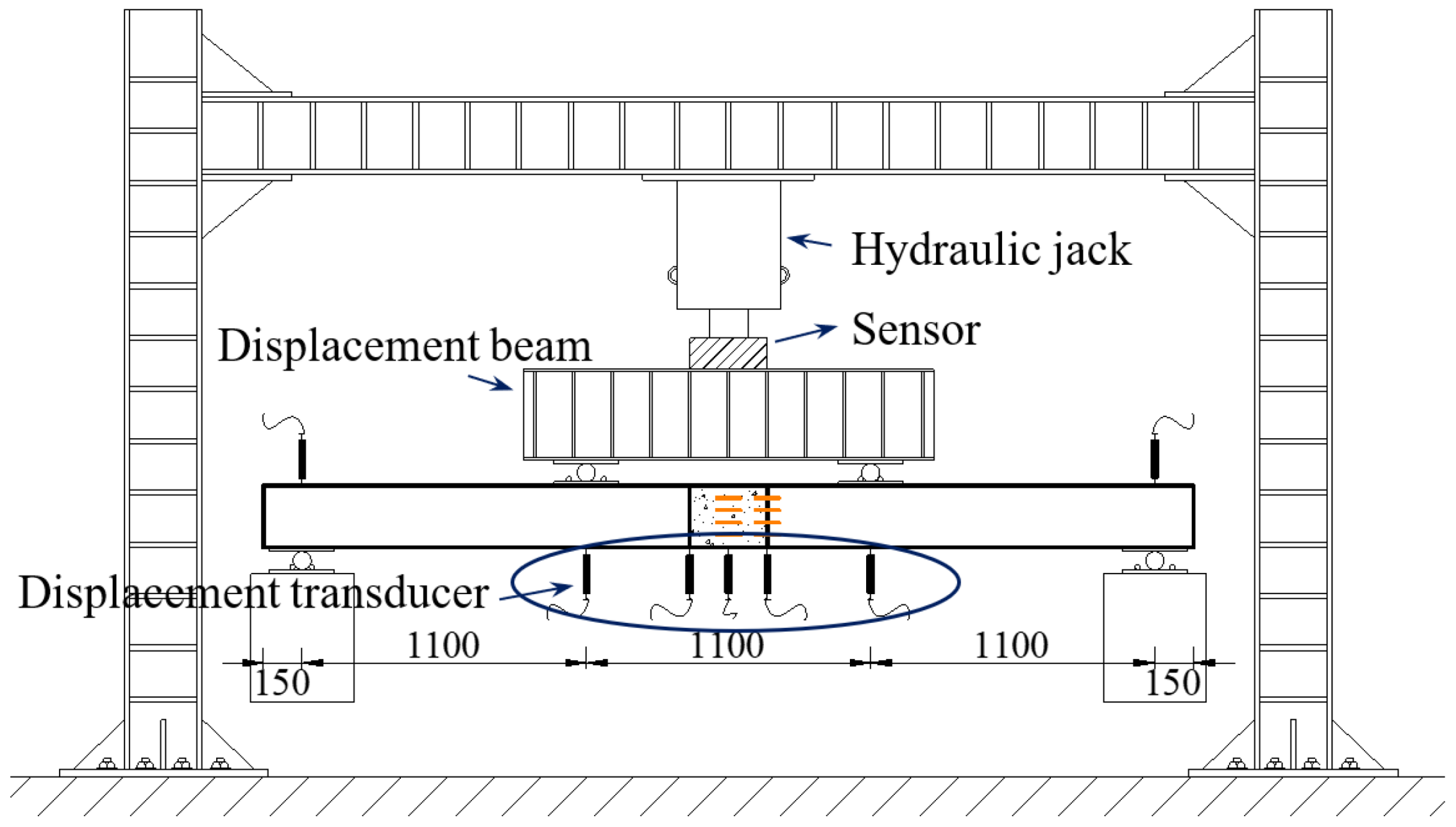







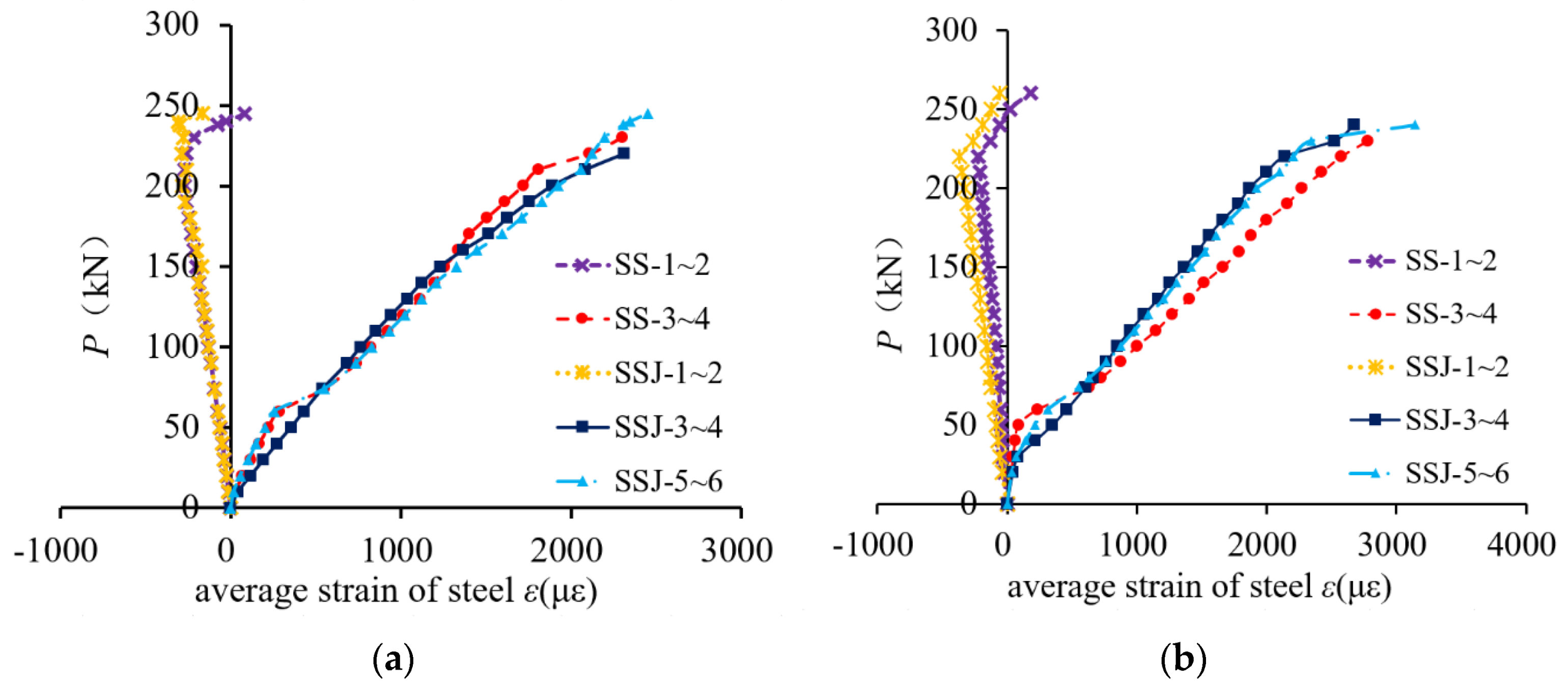

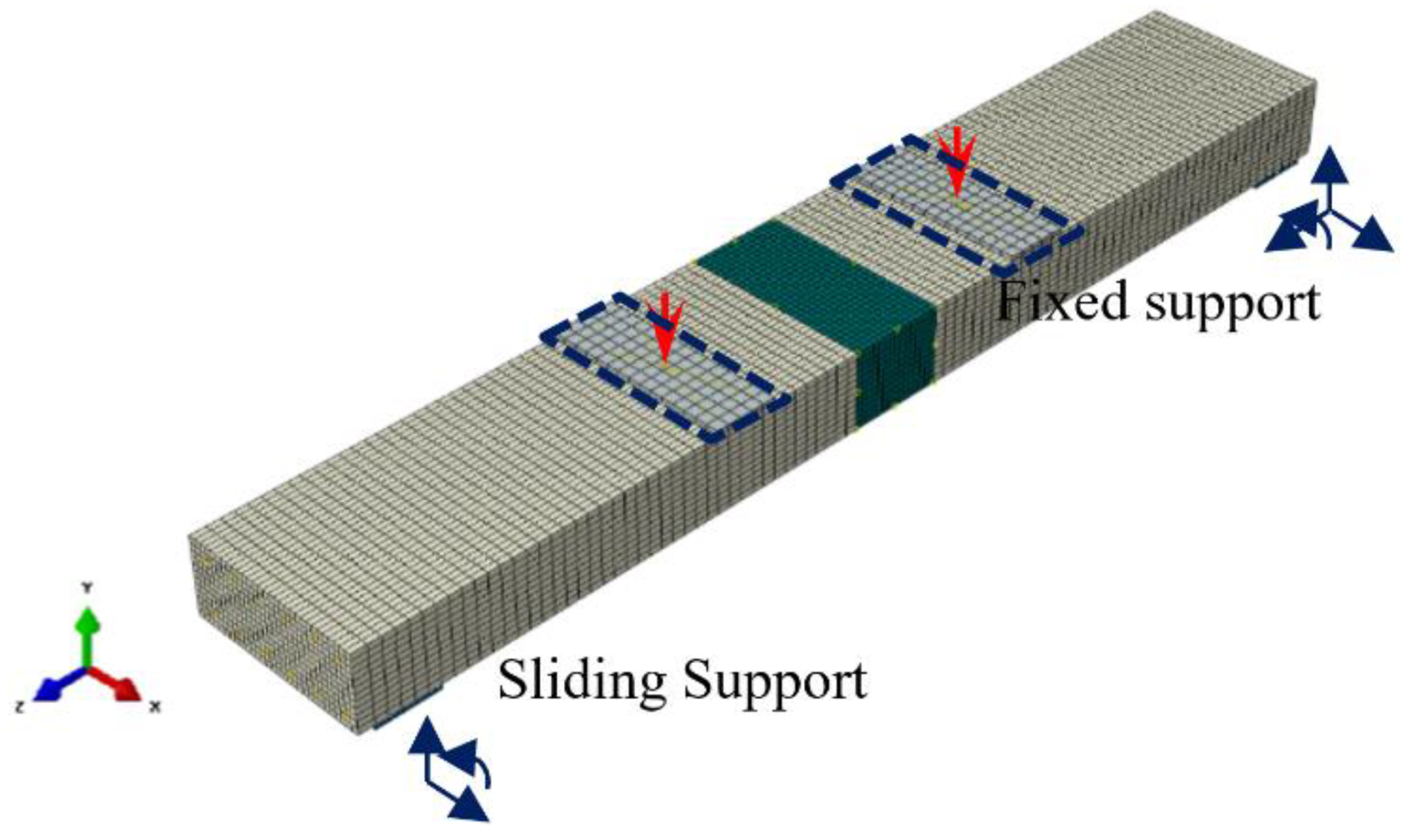
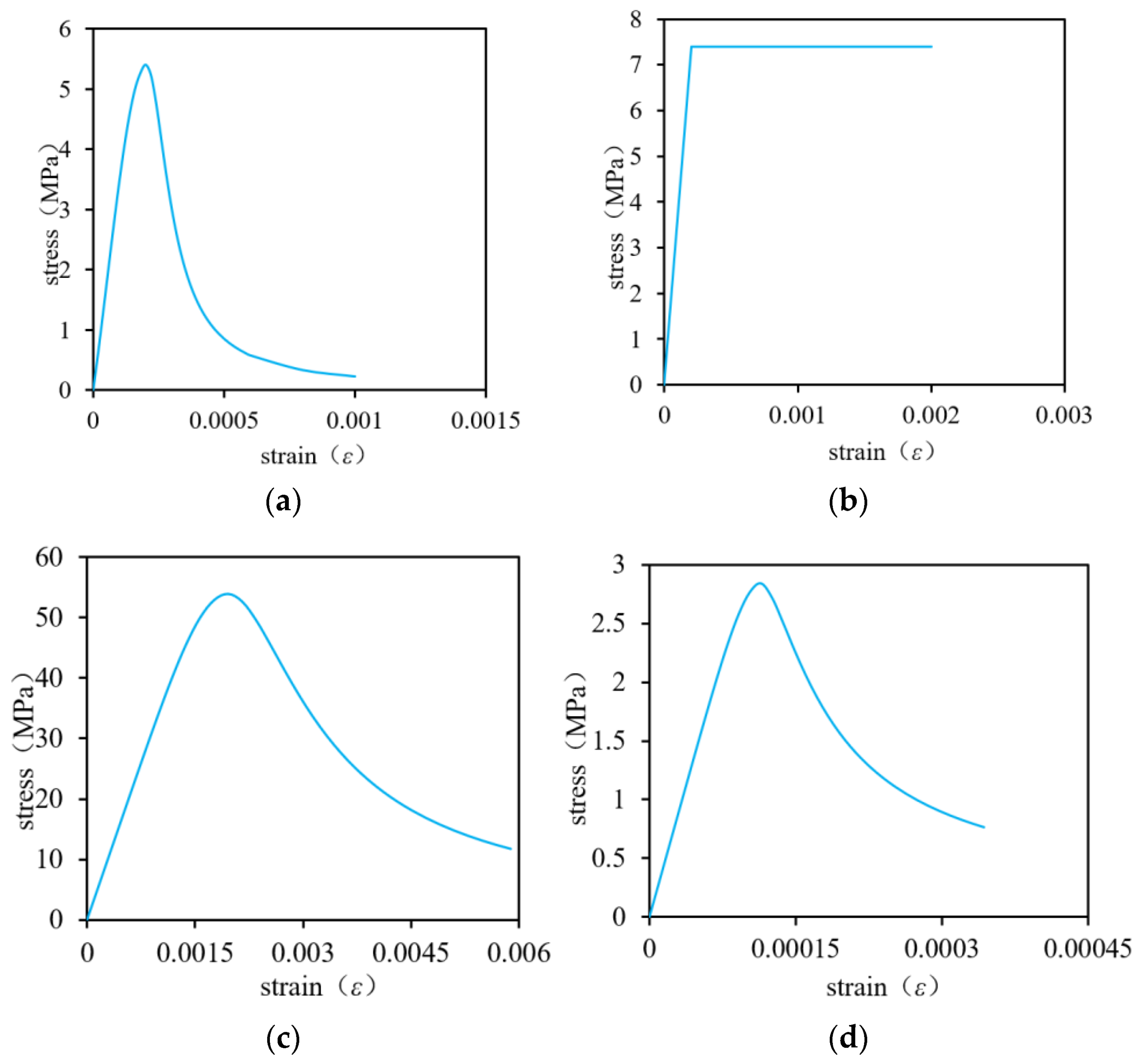
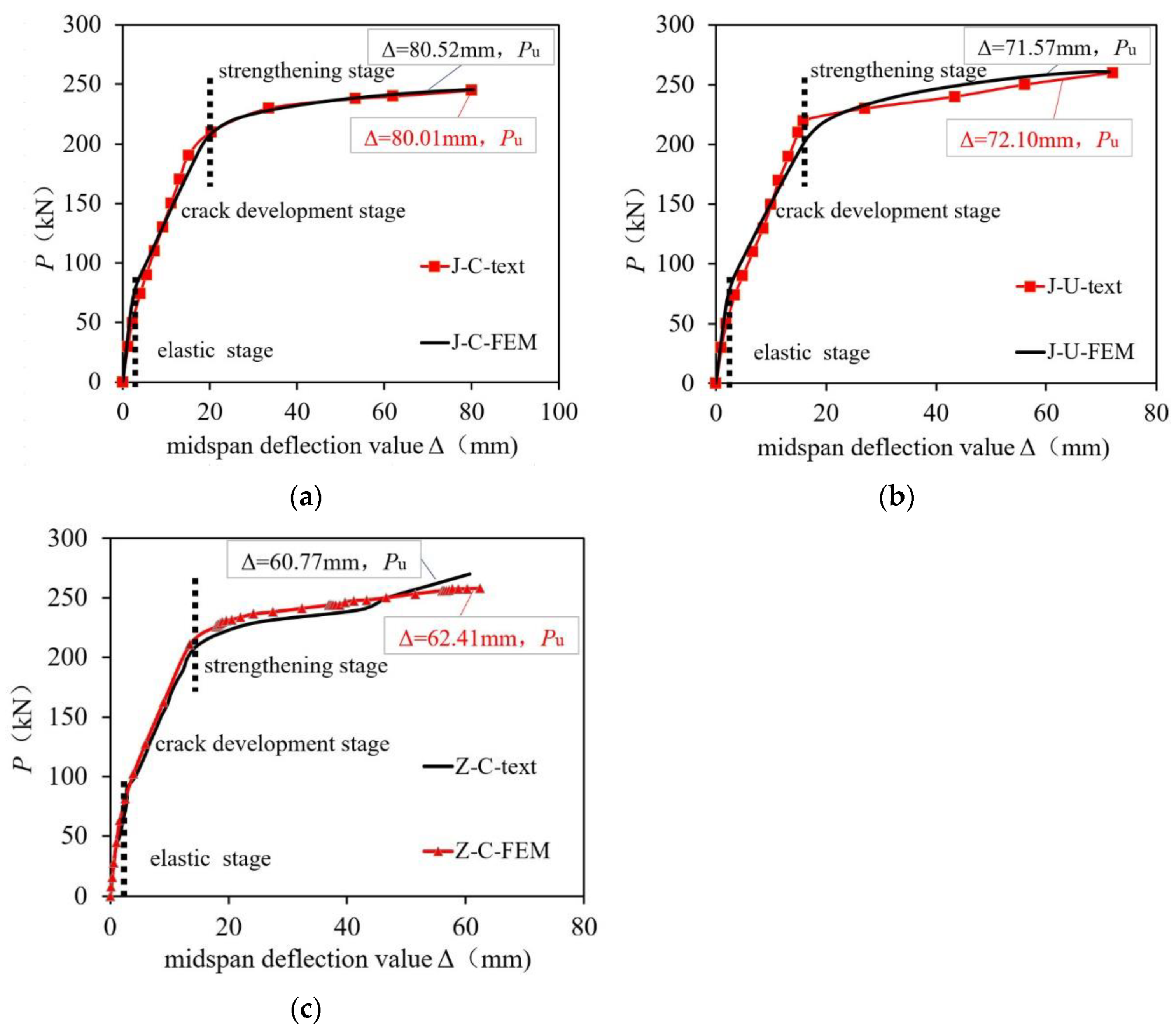
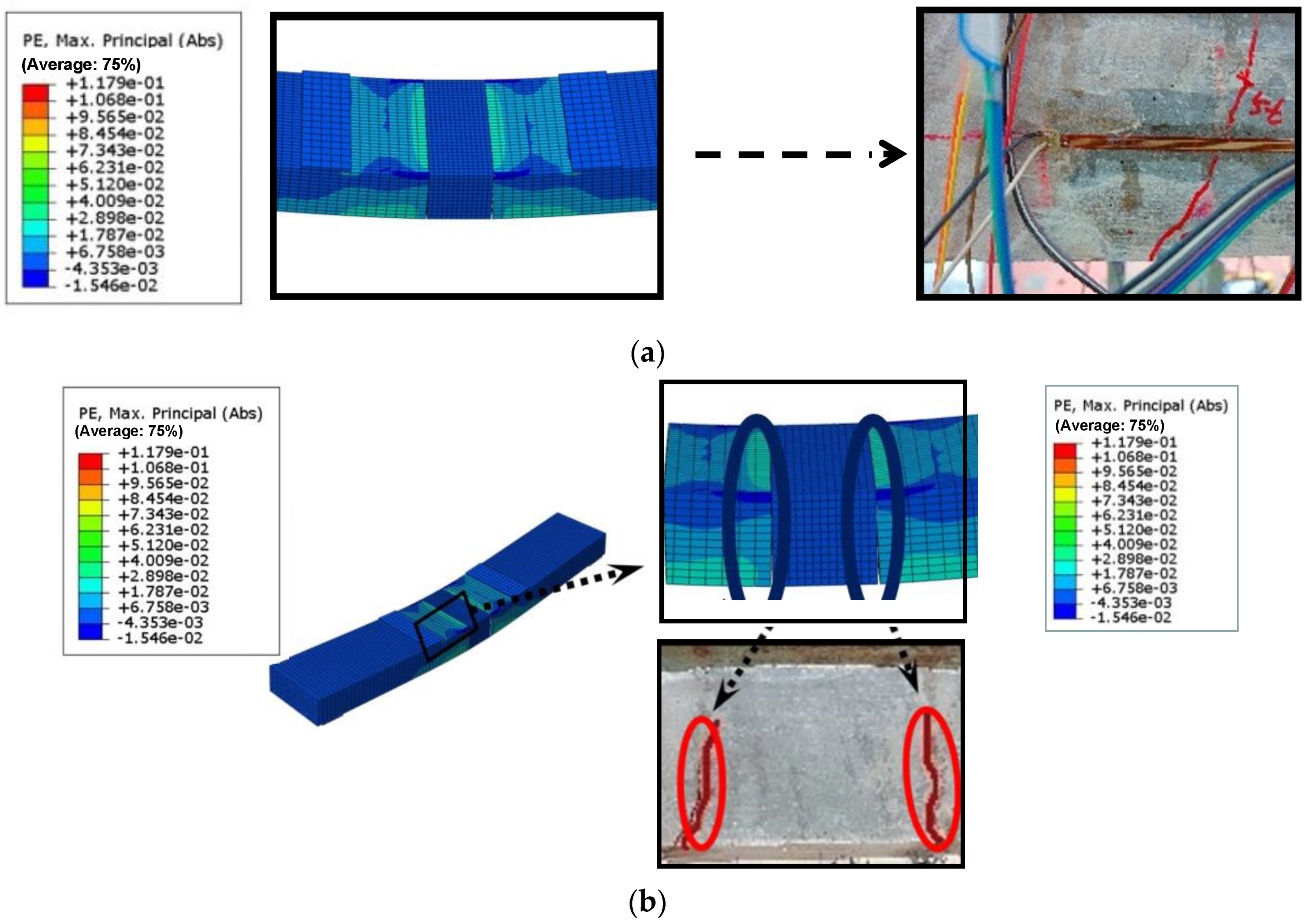
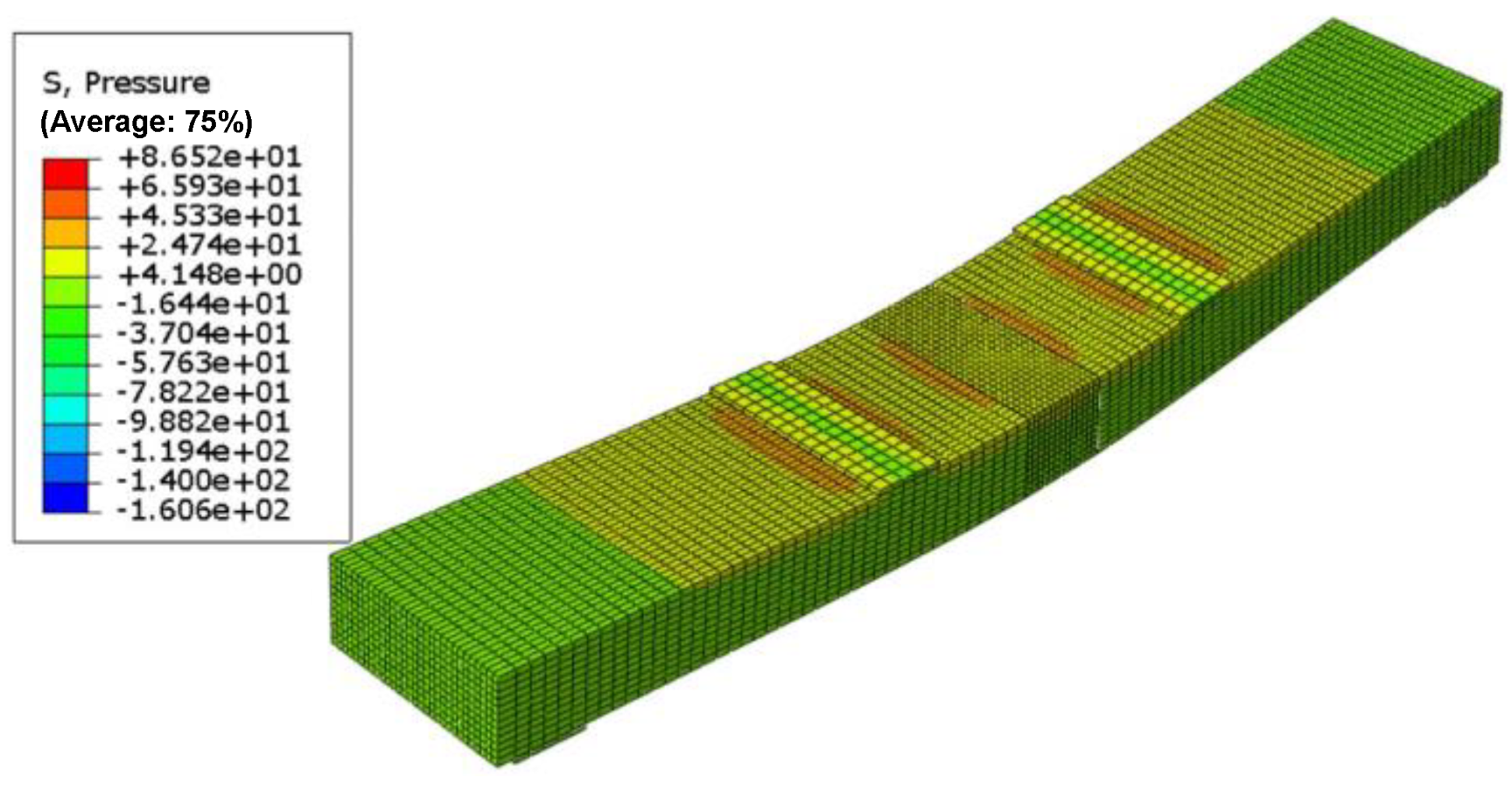

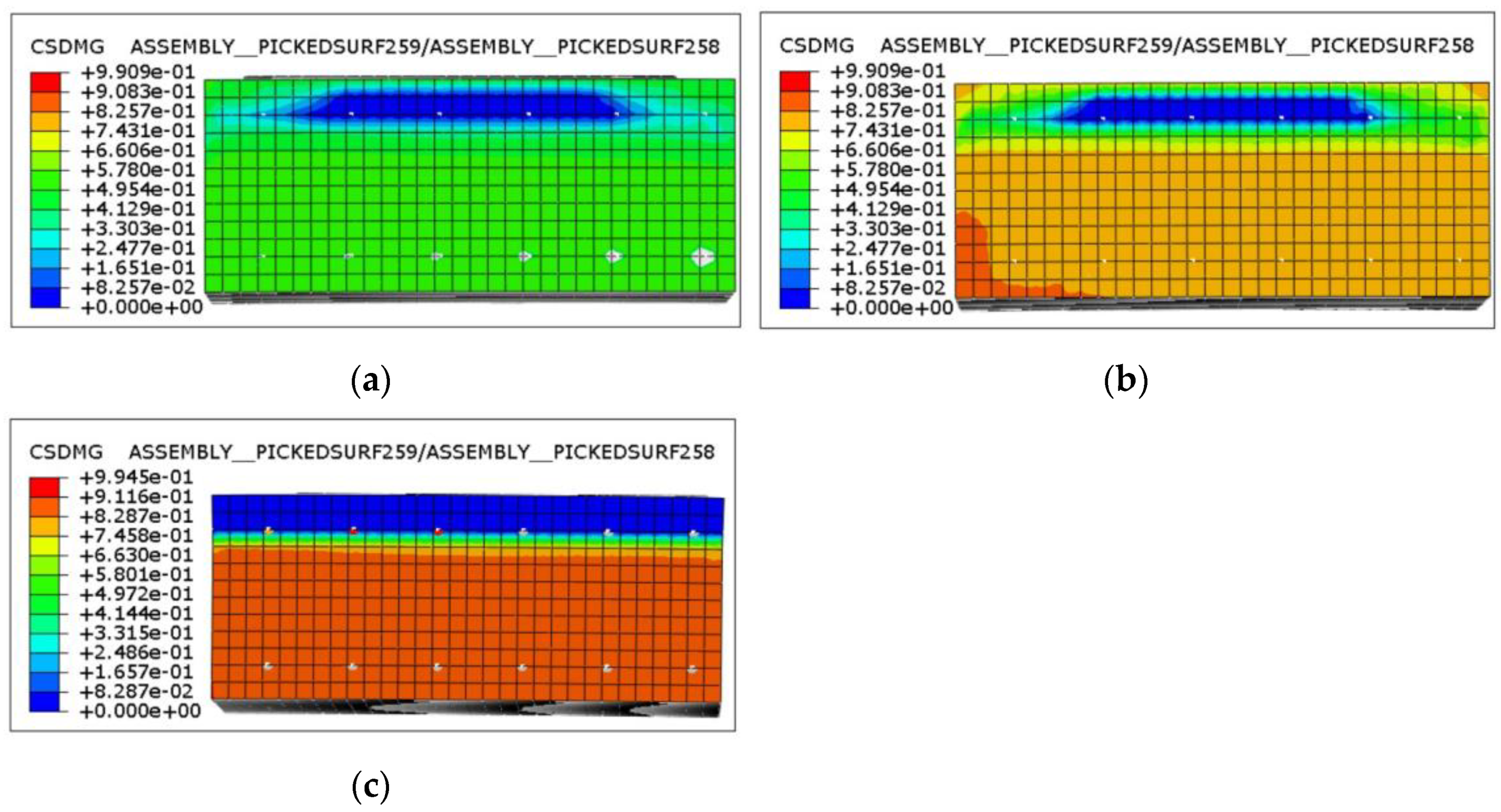


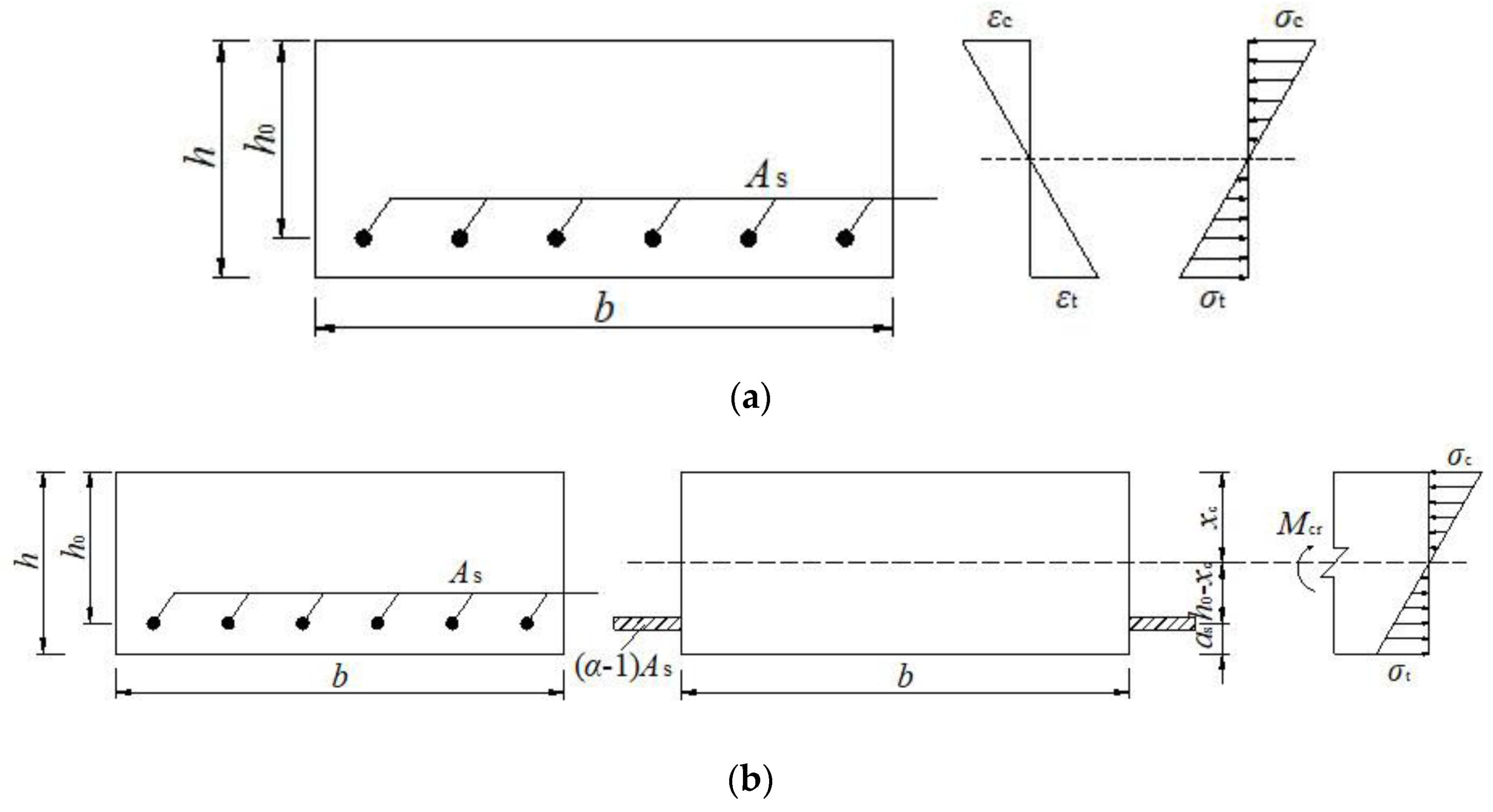

| Specimen ID | Reinforcement Type | Transverse Spacing of Steel Bars (mm) | Deck Type | Material | Connection Type |
|---|---|---|---|---|---|
| J-C | Ring ribs | 100 | C50 | C50 | Wet joint |
| J-U | Ring ribs | 100 | C50 | UHPC | |
| Z-C | Straight rib | 100 | C50 | / | Monolithically cast |
| Material | Cement | Fly Ash | Silica Fume | Fine Sand | Water | Water Reducer | Expansion Agent | Steel Fiber |
|---|---|---|---|---|---|---|---|---|
| UHPC | 1 | 0.41 | 0.23 | 0.54 | 0.24 | 0.036 | 0.18 | 2.5% |
| Material | Cement | Stone | Sand | Water | Water Reducer |
|---|---|---|---|---|---|
| C50 | 1 | 0.74 | 1.27 | 0.34 | 0.006 |
| Material | Cube Crushing Strength (MPa) | Prism Compressive Strength (MPa) | E (MPa) | Poisson Ratio |
|---|---|---|---|---|
| UHPC | 162.9 | 148.7 | 39.4 × 103 | 0.21 |
| C50 | 69.5 | 53.9 | 35.4 × 103 | 0.20 |
| Bar Diameter | Steel Shape | Yield Strength (MPa) | Ultimate Strength (MPa) | E (MPa) | Poisson Ratio |
|---|---|---|---|---|---|
| 12 | HPB400 | 427 | 603 | 2.00 × 105 | 0.30 |
| 16 | HRB400 | 444 | 626 | 2.00 × 105 | 0.30 |
| Group | Mid-Span Deflection at 30 kN (mm) | Mid-Span Deflection at 50 kN (mm) | Mid-Span Deflection at Pu (mm) | Pu (kN) |
|---|---|---|---|---|
| J-C | 1.26 | 2.22 | 80.16 | 245 |
| J-U | 0.98 | 1.88 | 72.10 | 260 |
| Z-C | 0.69 | 1.56 | 60.77 | 270 |
| ID | Width Value under Normal Use State (mm) | Load Value When the Crack Width Is 0.2 mm (kN) | Main Crack Limit Width (mm) | Limit Bearing Capacity (kN) |
|---|---|---|---|---|
| J-C | 0.15 | 50.0 | 3.00 | 238 |
| J-U | 0.00 | 77.6 | 1.92 | 240 |
| Z-C | 0.12 | 48.3 | 2.20 | 270 |
| Expansion Angle | 30° |
| Compression meridian strength ratio to tension meridian strength ratio K | 0.667 |
| Ratio of biaxial isobaric strength to the uniaxial compressive strength of concrete f b0/f c0 | 1.16 |
| Coefficient of viscosity | 0.005 |
| eccentricity | 0.1 |
| Specimen ID | Measured Value Py (kN) | Simulation Value Pmy (kN) | Pmy/Pu |
|---|---|---|---|
| J-C | 200 | 203.5 | 1.018 |
| J-U | 220 | 213.9 | 0.972 |
| Z-C | 210 | 214.1 | 1.020 |
| Specimen ID | Measured Value Pu (kN) | Simulation Value Pmu (kN) | Pmu/Pu |
|---|---|---|---|
| J-C | 245 | 245.8 | 1.003 |
| J-U | 260 | 260.7 | 1.003 |
| Z-C | 270 | 258.0 | 0.956 |
| Specimen ID | Experimental Value (kN·m) | Theoretical Value (kN·m) | Error (%) |
|---|---|---|---|
| J-C | 16.50 | 16.38 | −0.73 |
| J-U | 27.50 | 26.45 | −3.97 |
| Z-C | 23.00 | 16.38 | −0.35 |
| Specimen ID | Residual Tensile Strength Value (MPa) | Experimental Value (kN·m) | Theoretical Value (kN·m) | Error (%) |
|---|---|---|---|---|
| J-C | 4.5 | 134.75 | 143.17 | 5.88 |
| J-U | 5.0 | 143.00 | 149.16 | 4.13 |
| Z-C | 4.5 | 115.50 | 110.66 | −4.37 |
Disclaimer/Publisher’s Note: The statements, opinions and data contained in all publications are solely those of the individual author(s) and contributor(s) and not of MDPI and/or the editor(s). MDPI and/or the editor(s) disclaim responsibility for any injury to people or property resulting from any ideas, methods, instructions or products referred to in the content. |
© 2023 by the authors. Licensee MDPI, Basel, Switzerland. This article is an open access article distributed under the terms and conditions of the Creative Commons Attribution (CC BY) license (https://creativecommons.org/licenses/by/4.0/).
Share and Cite
Zhao, X.; Xiang, W.; Yang, Y.; Wang, Y.; Tao, J.; Huang, J.; Zhao, Q.; Xiao, F. Flexural Behavior of Prefabricated RC Bridge Deck with Different Joint Materials. Buildings 2023, 13, 1420. https://doi.org/10.3390/buildings13061420
Zhao X, Xiang W, Yang Y, Wang Y, Tao J, Huang J, Zhao Q, Xiao F. Flexural Behavior of Prefabricated RC Bridge Deck with Different Joint Materials. Buildings. 2023; 13(6):1420. https://doi.org/10.3390/buildings13061420
Chicago/Turabian StyleZhao, Xiaoming, Wei Xiang, Yaofeng Yang, Ying Wang, Jing Tao, Jinju Huang, Qiu Zhao, and Feng Xiao. 2023. "Flexural Behavior of Prefabricated RC Bridge Deck with Different Joint Materials" Buildings 13, no. 6: 1420. https://doi.org/10.3390/buildings13061420
APA StyleZhao, X., Xiang, W., Yang, Y., Wang, Y., Tao, J., Huang, J., Zhao, Q., & Xiao, F. (2023). Flexural Behavior of Prefabricated RC Bridge Deck with Different Joint Materials. Buildings, 13(6), 1420. https://doi.org/10.3390/buildings13061420





